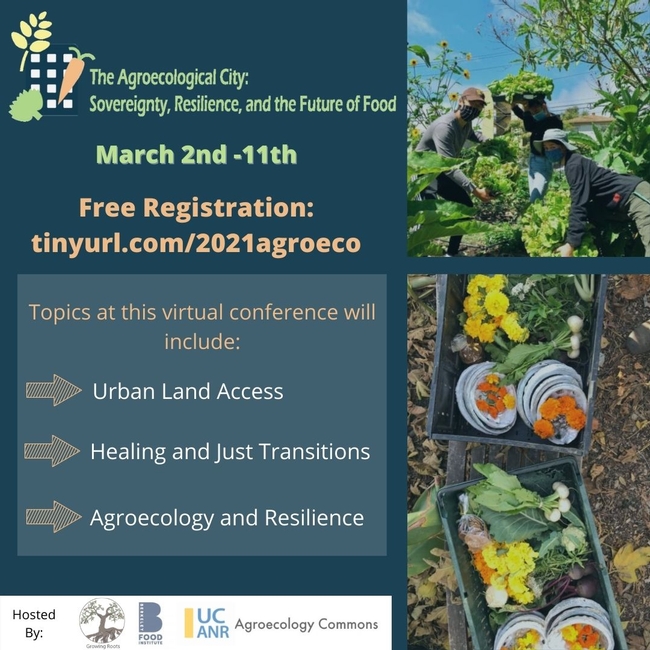- Author: Amrita Mukherjee
The California Department of Food and Agriculture's (CDFA) Urban Agriculture Grant Program, 2023 is an exclusive and competitive funding opportunity designed to support and elevate agriculture in urban areas across California. This one-time grant program will fund programs and projects that enhance the sustainability and success of urban agriculture throughout California.
Urban agriculture encompasses a variety of practices aimed at cultivating, processing, and distributing agricultural products within urban environments. These practices can include small plot cultivation on the ground, raised beds, vertical farming, warehouse farms, mushroom cultivation, urban forestry, community gardens, and rooftop farms, as well as innovative methods such as hydroponics, aeroponics, and aquaponics. The goal is to explore and implement diverse approaches to sustainably grow food within city settings. Urban farmers and gardeners collaborate with a wide range of people to enhance the availability of nourishing food, promote community involvement, offer vocational training, educate communities about agriculture, and expand green areas in urban settings.
CDFA defines "urban" as a geographic area within 25 miles of an Urbanized Area with a population of 50,000 or more. This definition guides the CDFA in determining the boundaries of urban areas for their programs and initiatives.
There are two funding tracks: The Systems Builder Community-Based Block Grant will provide funding ranging from $75,000 to $400,000 for community-based organizations involved in urban and regional food systems planning. This funding aims to increase staff capacity and support organizations with grassroots involvement in this field. The Urban Agriculture Practitioner Grant will offer direct funding to urban agriculture projects, providing grants ranging from $75,000 to $250,000. The CDFA has allocated up to $5,870,000 for proposals received through this solicitation.
Application deadline: October 23, 2023
Eligibility:
Track 1: Systems Builder Community-Based Block Grant
- Nonprofit organizations and Tribal governments and Tribal-based nonprofit organizations with knowledge and experience in regional food systems are eligible to apply.
- Individuals; for-profit organizations; local, state, and federal government entities; and public or private colleges and universities are not eligible to apply.
Track 2: Urban Agriculture Practitioner Grant
- Nonprofit organizations, for-profit organizations, Tribal governments, and Tribal-based nonprofit organizations are eligible to apply.
- Individuals; local, state, and federal government entities; and public or private colleges and universities are not eligible to apply.
For more information:
Please review the FAQs sheet
Please connect to CDFA's Urban Ag Program Lead at caurbanag@cdfa.ca.gov with questions.
CDFA Urban Agriculture Grant Program News Letter
What does it mean to build a just and sustainable Agroecological City? Over this past year, the pandemic, climate disruptions and ongoing harm caused by racial violence have challenged our urban communities and food systems in unprecedented ways. Pathways for healing and community resilience can be found in many urban farms. An upcoming free, online conference, The Agroecological City: Sovereignty, Resilience, and the Future of Food, seeks to engage in critical conversations around what it means to build a just, sustainable and resilient Agroecological City.
The multi-track event will take place from March 2-11. Join urban farmers, food and farming justice advocates, policy makers, educators, community organizers, and engaged citizens to share strategies for strengthening our urban food and farming systems. Although the event has a strong focus on urban farms in the Bay Area, it will be valuable to anyone interested in urban agroecology, regardless of their geographic location. Through panel discussions and break-out sessions over two weeks, participants will have the opportunity to:
- Turn over ideas for different and innovative pathways to access land for urban farming
- Dig into the intersection of food and land stewardship for community healing and Just Transitions
- Explore the latest agroecological research and policy work alongside educational institutions in farm and food system resilience and more!
Throughout all these themes, the commitment to food justice is paramount. Organizers and guest speakers will weave in discussions of power, race, class, health, and wellbeing, and will invite participant contributions to these urgent conversations. Register for one or more free sessions, which include:
Day 1: Ancestral healing through food and land: A peer-to-peer workshop
Day 2: Innovative land access for urban farming: private partnerships
Day 3: Innovative land access for urban farming: Public partnerships
Day 3: Challenges and Opportunities within the Role of Education in Urban Agroecology
Day 4: Just Transition to Agroecology: Transferring power and restoring sovereignty to BIPOC land stewards
Day 5: Innovative land access for urban farming: Legal & policy dimensions
Day 6: Strengthening Agroecological Resilience in the City
Find out more about each event within the conference here: https://nature.berkeley.edu/growingroots/agroeco-conference-2021/. The conference is organized by UC Berkeley Growing Roots, UC Berkeley Food Institute, UC ANR, and other partners.




